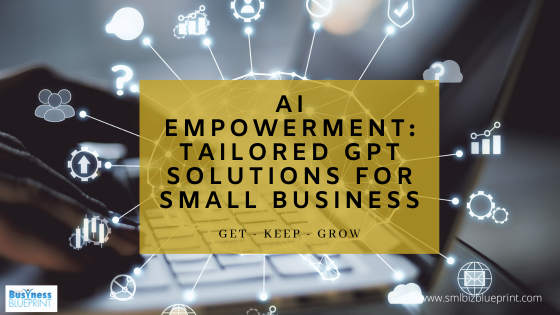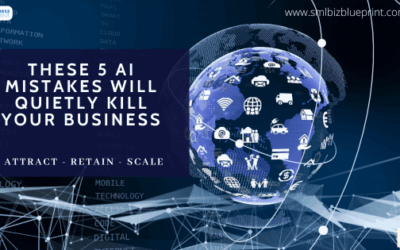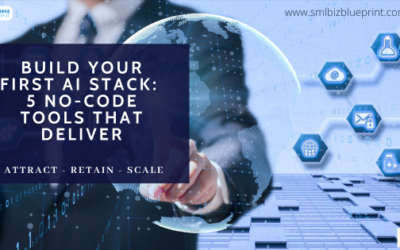GPTs are a cutting-edge way to create customized versions of ChatGPT for specific tasks in daily life, work, or even at home.
To build one, you need to start a conversation with the GPT Builder and provide it with instructions and additional knowledge. You can then choose what your GPT can do, such as searching the web, making images, or analysing data.

What is the Significance of Custom GPTs?
Custom GPTs provide unparalleled customisation options for leveraging generative pre-trained transformer models (GPT).
Users can develop AI models tailored to their precise needs through the intuitive interface of the GPT Builder within ChatGPT.
The GPT Builder facilitates the creation of personalized versions of ChatGPT, empowering users to address specific tasks or topics.
This conversational interface enables small businesses to customise AI models to their requirements, unlocking opportunities across diverse domains.
Furthermore, you’ll find GPTs in productivity, knowledge exploration, web development, graphic design, and more.
Custom GPTs offer users unprecedented customisation in utilising generative pre-trained transformer models (GPT).
By engaging with the GPT Builder within ChatGPT, you can create unique AI models catering to your specific requirements.
Using the GPT Builder
The GPT Builder tool streamlines the creation of customized GPT models through a user-friendly chat interface and guided prompts.
Here’s how:
Interactive Conversation: Users use a conversational interface with the GPT Builder, which simplifies providing instructions and preferences for the desired GPT model.
Guided Prompts: The GPT Builder asks users a series of questions to gather information about the intended purpose, behaviour, and capabilities of the custom GPT. These prompts help users articulate their requirements clearly.
Personalised Recommendations: The GPT Builder generates suggested names and icons for the customised GPT model based on the user’s responses. This personalised approach helps users visualise and refine their creations.
Iterative Process: The conversation with the GPT Builder is iterative, allowing users to modify settings and behaviour based on their preferences as they progress through the customisation process.
No Coding Required: Importantly, the GPT Builder does not require any programming knowledge from users. Instead, it guides them through the customisation process using simple language and prompts.
Overall, the GPT Builder empowers users to create tailored GPT models by guiding them through the customisation process in an intuitive and user-friendly manner, thereby streamlining the creation process and making AI customisation accessible to a wider audience.
Applications for Small Businesses
Users can create customised GPT models using the GPT Builder for their small business across various tasks and topics.
Some examples include:
Customer Support: Build a GPT model trained to provide personalised responses to customer inquiries, handle common support questions, and assist with troubleshooting.
Product Recommendations: Create a GPT model capable of generating tailored product recommendations based on customer preferences, purchase history, and browsing behaviour.
Sales Assistance: Develop a GPT model to support sales representatives by providing information on products or services, answering customer queries, and assisting with the sales process.
Marketing Content Generation: Train a GPT model to generate marketing content, such as blog posts, social media captions, email newsletters, and advertising copy, tailored to the business’s target audience.
Inventory Management: Customize a GPT model to assist with inventory management tasks, such as forecasting demand, optimising stock levels, and generating purchase orders.
Appointment Scheduling: Build a GPT model capable of scheduling appointments, managing calendars, and sending reminders to clients or customers.
Market Research: Develop a GPT model to analyse market trends, gather insights from customer feedback, and generate reports to inform business decisions.
Employee Training: Train a GPT model to provide on-demand training and guidance to employees on various topics, procedures, and best practices within the company.
Financial Analysis: Create a GPT model to analyse financial data, generate reports, and provide insights into budgeting, forecasting, and financial planning for the business.
Customised Workflows: Develop a GPT model to automate repetitive tasks, streamline workflows, and improve efficiency across different departments or functions within the business.
These examples demonstrate the versatility of customised GPT models in enhancing various aspects of small business operations, from customer service and marketing to inventory management and employee training.

Aligning with Business Goals
A small business can ensure that the customised GPT models created using the GPT Builder align with their specific business goals and objectives through the following steps:
Define Clear Objectives: Clearly define the business goals and objectives the customised GPT model intends to support. Identify the specific tasks, processes, or challenges the model should address.
Understand Business Needs: Conduct a thorough assessment of the business’s needs, pain points, and areas for improvement. Determine how AI-powered solutions, such as customised GPT models, can help address these needs and achieve the desired outcomes.
Tailor Model Training: Customize the training data and prompts used to train the GPT model to reflect the unique requirements and context of the business. Incorporate relevant industry-specific terminology, customer preferences, and business processes into the training process.
Iterative Development Process: Take an iterative model development, testing, and refinement approach. Solicit feedback from key stakeholders, including employees and customers, throughout the development process to ensure that the model meets their needs and expectations.
Monitor Performance Metrics: Define key performance indicators (KPIs) and metrics to measure the effectiveness and performance of the customised GPT model. Track metrics such as accuracy, response time, user satisfaction, and business impact to assess the model’s contribution to achieving business goals.
Continuous Improvement: Continuously monitor and evaluate the performance of the customized GPT model against established KPIs. Identify opportunities for improvement and refinement based on feedback, usage patterns, and evolving business needs.
Integration with Business Processes: Integrate the customised GPT model seamlessly into existing business processes and workflows. Ensure employees have the necessary training and support to utilise the model in their daily operations effectively.
Alignment with Ethical and Legal Considerations: Ensure that the use of the customised GPT model aligns with ethical guidelines and legal regulations, particularly regarding data privacy, security, and fairness. Take steps to mitigate risks and ensure compliance with relevant standards and regulations.
By following these steps, a small business can ensure that the customised GPT models created using the GPT Builder are closely aligned with their specific business goals and objectives, thereby maximising the value and impact of AI-powered solutions.
Training Best Practices
There are several considerations and best practices to keep in mind when training a GPT model for small business applications:
Quality and Relevance of Training Data: Ensure the training data used to train the GPT model is highly relevant to the specific business domain and tasks. Use data sources that accurately represent the language, terminology, and context relevant to the business.
Bias and Fairness: Be mindful of potential biases in the training data and take steps to mitigate bias to ensure fairness and inclusivity in the model’s predictions and outputs. Regularly audit and evaluate the model’s performance across different demographic groups to identify and address bias.
Fine-tuning Parameters: Experiment with different hyperparameters and fine-tuning techniques to optimise the performance of the GPT model for specific business tasks and objectives. Adjust parameters such as learning rate, batch size, and number of training epochs based on empirical results and domain expertise.
Domain-Specific Knowledge: Incorporate domain-specific knowledge and expertise into the training process to enhance the model’s understanding and performance in the target business domain. Provide relevant context and examples to guide the model’s learning process effectively.
Data Augmentation and Diversity: Augment the training data with diverse examples and variations to improve the robustness and generalization ability of the GPT model. Include a variety of scenarios, edge cases, and corner cases to ensure that the model can handle a wide range of inputs and conditions.
Regular Model Evaluation and Validation: Continuously evaluate and validate the performance of the trained GPT model using representative datasets and real-world scenarios. Monitor key metrics such as accuracy, precision, recall, and F1 score to assess the model’s effectiveness and reliability.
Iterative Improvement Process: Take an iterative approach to model training and refinement, incorporating feedback and insights from end-users and stakeholders to enhance the model’s performance over time. Iterate the training process based on observed performance and user feedback to achieve incremental improvements.
Ethical and Legal Compliance: Ensure that the training process and model outputs comply with ethical guidelines and legal regulations, particularly regarding data privacy, security, and confidentiality. Protect sensitive information and adhere to relevant industry standards and regulations.
By adhering to these considerations and best practices, small businesses can effectively train and deploy GPT models tailored to their specific applications, enhancing productivity, efficiency, and decision-making across various business functions.
Refinement Strategies
Small businesses can adapt and refine their customised GPT models to address evolving business needs and market dynamics over time through the following strategies:
Continuous Monitoring: Regularly monitor the performance and effectiveness of the customised GPT model in real-world scenarios. Track key performance indicators (KPIs) and user feedback to identify areas for improvement and adaptation.
Feedback Loop: Establish a feedback loop with end-users, employees, and stakeholders to gather insights, suggestions, and requests for enhancements to the GPT model. Solicit feedback through surveys, interviews, and direct interactions to understand evolving business needs.
Iterative Development: Take an iterative model refinement and enhancement approach based on feedback and observed performance. Implement incremental updates and improvements to the GPT model, incorporating new data, insights, and features as needed.
Dynamic Training Data: Continuously update and expand the training data used to train the GPT model to reflect changes in the business environment, customer preferences, and market trends. Incorporate new examples, scenarios, and use cases to improve the model’s adaptability and relevance.
Flexible Architecture: Design the GPT model with a flexible and modular architecture that allows easy adaptation and customisation. Incorporate parameter tuning, feature engineering, and model retraining mechanisms to accommodate evolving requirements and use cases.
Scenario-based Testing: Conduct scenario-based testing and simulation to evaluate the performance of the GPT model under different conditions and scenarios. Test the model’s robustness, scalability, and generalisation ability to ensure its effectiveness in diverse real-world situations.
Collaborative Development: Foster collaboration and knowledge-sharing among cross-functional teams involved in GPT model development and deployment. Encourage collaboration between data scientists, domain experts, and business stakeholders to leverage diverse perspectives and expertise.
Agile Methodologies: Adopt agile methodologies and practices for model development and deployment, such as sprint cycles, backlog prioritization, and rapid prototyping. Embrace an agile mindset to respond quickly to changing business needs and market dynamics.
External Partnerships: Explore partnerships with external vendors, consultants, or research institutions to access additional expertise, resources, and tools for GPT model adaptation and refinement. Collaborate with industry experts and thought leaders to stay informed about emerging trends and best practices.
Regulatory Compliance: Stay informed about regulatory requirements and AI and machine learning application industry standards. Ensure the customised GPT model complies with applicable regulations, standards, and guidelines to mitigate risks and maintain trust.
By implementing these strategies, small businesses can effectively adapt and refine their customised GPT models to address evolving business needs and market dynamics, enabling them to remain competitive and responsive in a rapidly changing environment.

Initial GPT Models for Small Businesses
For small businesses looking to leverage GPT models to improve their performance, here are seven types of GPT models they should consider building initially:
Customer Support Assistant: A GPT model trained to assist with customer inquiries, provide personalised support, and troubleshoot common issues. This can help streamline customer service processes, enhance response times, and improve overall customer satisfaction.
Product Recommendation Engine: Develop a GPT model capable of generating tailored product recommendations based on customer preferences, purchase history, and browsing behaviour. This can increase sales, enhance cross-selling and upselling opportunities, and personalise customer shopping experience.
Marketing Content Generator: Create a GPT model to generate marketing content such as blog posts, social media captions, email newsletters, and advertising copy. This can save time and resources on content creation, maintain a consistent brand voice, and engage customers more effectively.
Inventory Management Assistant: Build a GPT model to assist with inventory management tasks, such as forecasting demand, optimising stock levels, and generating purchase orders. This can help reduce inventory costs, minimise stockouts and overstock situations, and improve overall supply chain efficiency.
Appointment Scheduler: Develop a GPT model to automate appointment scheduling, manage calendars, and send reminders to clients or customers. This can help streamline appointment booking processes, reduce scheduling conflicts, and improve client communication.
Market Research Analyst: Train a GPT model to analyse market trends, gather insights from customer feedback, and generate reports to inform business decisions. This can help small businesses stay informed about industry trends, identify new opportunities, and make data-driven decisions.
Employee Training Assistant: Create a GPT model to provide on-demand training and guidance to employees on various topics, procedures, and best practices within the company. This can help improve employee productivity, facilitate knowledge sharing, and support ongoing professional development.
By building and deploying these GPT models, small businesses can enhance their operational efficiency, customer engagement, and decision-making processes, ultimately driving business growth and success.
FAQs
What are custom GPT models, and how do they differ from standard GPTs?
Custom GPT models are tailored versions of standard GPTs designed to meet specific business needs. While standard GPTs offer general capabilities, custom GPTs can be trained to excel in particular tasks or domains.
How can I start creating a custom GPT model for my business?
To start creating a custom GPT model, you can use tools like the GPT Builder within ChatGPT. This user-friendly interface guides you through providing instructions and preferences for your desired GPT model.
What are some practical applications of custom GPT models for small businesses?
Custom GPT models can be applied to small business operations, including customer support, product recommendations, sales assistance, marketing content generation, inventory management, appointment scheduling, market research, employee training, financial analysis, and workflow automation.
Do I need programming knowledge to create a custom GPT model?
No, the GPT Builder tool does not require any programming knowledge. It guides users through the customisation process using simple language and prompts, making AI customization accessible to a broader audience.
How can I ensure my custom GPT model aligns with my business goals?
Defining clear objectives for your custom GPT model and understanding your business needs is essential. You can ensure alignment with your business goals by customising the training data, soliciting feedback, monitoring performance metrics, and integrating the model into existing workflows.
What are some best practices for training and refining a custom GPT model?
Best practices include using high-quality and relevant training data, mitigating bias, experimenting with hyperparameters, incorporating domain-specific knowledge, augmenting data diversity, regularly evaluating model performance, and taking an iterative improvement approach.
How can small businesses adapt and refine their custom GPT models over time?
Small businesses can adapt and refine their custom GPT models by continuously monitoring performance, establishing a feedback loop with end-users, taking an iterative development approach, updating training data, designing a flexible architecture, conducting scenario-based testing, fostering collaborative development, embracing agile methodologies, and staying compliant with regulations.




